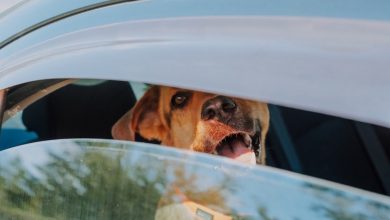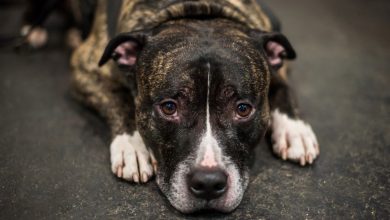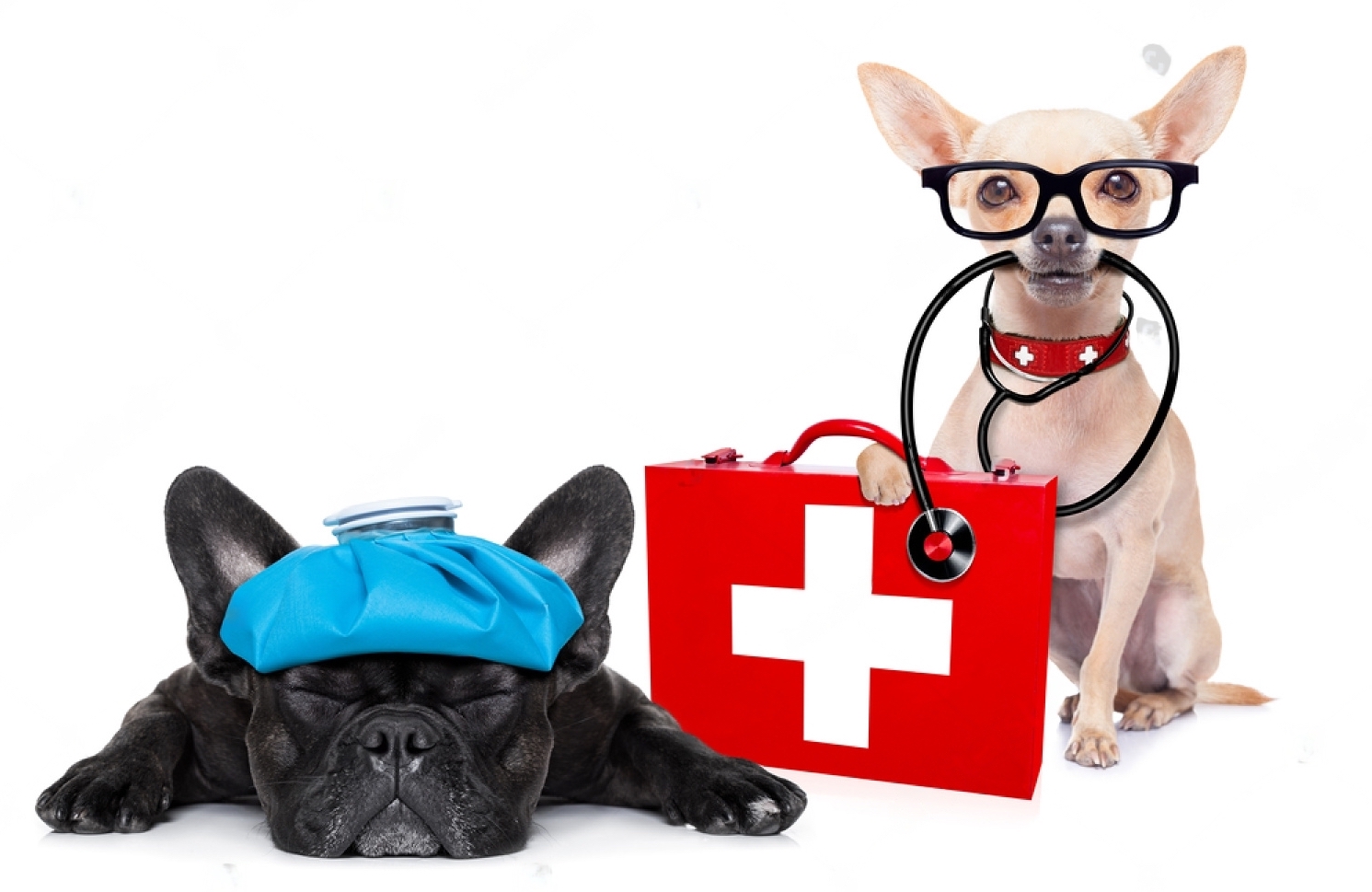
Dog accidents happen more often than you think: Whether it’s a bite while walking or an accident in your home, quick first aid for your dog is essential. To be prepared for such (emergency) incidents, you can learn what supplies you should always have at home in this article.
Prepare in advance
Of course, it is not always possible to predict that something will happen to your pet today or tomorrow. However, that is why it is important to prepare yourself in advance. This includes, above all, acquiring important knowledge!
For example:
- How do you put a bandage on a dog?
- What is important when disinfecting a dog’s wounds?
- How do you remove a foreign body, such as a splinter, without causing your dog unnecessary stress?
As a dog owner, you should be able to answer all of these questions in advance so that if the worst happens, you don’t have to panic and wonder what to do. This knowledge will help you stay calm in an emergency situation. Preparing for an emergency also includes having the most important contact information: the numbers and addresses of the nearest vets or veterinary clinics, you should always have on hand to contact them as quickly as possible. A great alternative, which unfortunately is not available everywhere, is animal rescue services. Find out about such services in your area of residence.
Simple wound care
Wound care should be performed when the dog has open wounds. These do not have to be large wounds. Even insect bite wounds are open wounds and carry the risk of infectious disease. The wound should be evaluated first.
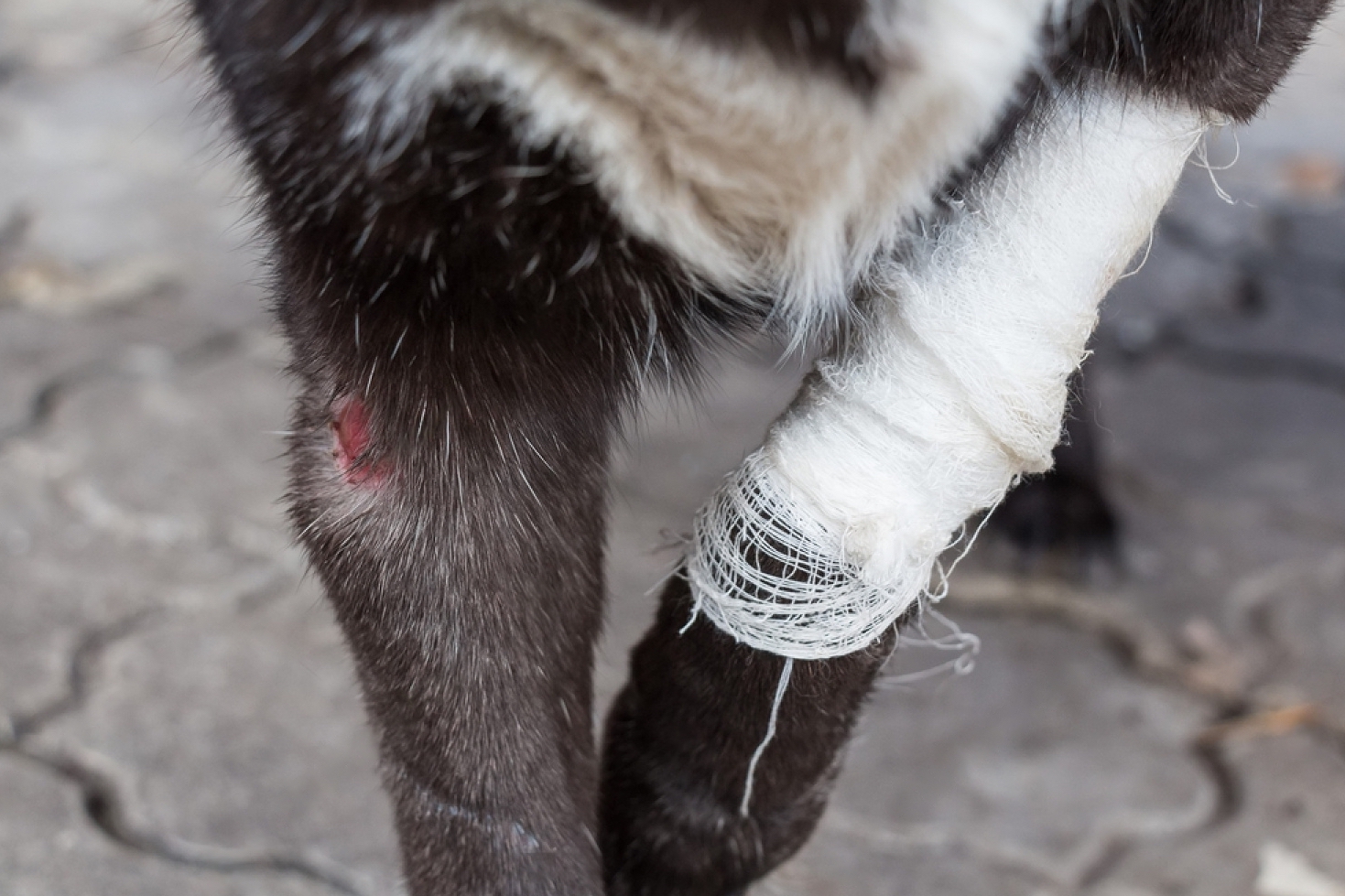
Small and superficial wounds in dogs
Is it a minor injury and there is no doubt that there are no more serious injuries? Then often simple wound care will suffice.
Wash the wound with a disinfectant solution. If no such solution is available and the wound is very dirty, clean water will suffice (not desired).
Then apply a mild disinfectant. Important: Disinfect such wounds only once! Repeated disinfection prevents the wound from healing.
Ointments often cause dogs to lick the wound. Licking wounds is harmful to the pet and leads to unpleasant inflammation. Therefore, it is best not to use them unless absolutely necessary.
Large wounds in dogs
First aid measures depend on the type of wound the animal has. As a general rule, the wound should be as clean as possible and at first do not use ointments, sprays or similar products. Otherwise, the veterinarian will not be able to examine the wound properly. You should then discuss anti-inflammatory and healing treatments with your veterinarian.
Heavy bleeding in a dog
If your dog is bleeding heavily, you must do everything possible to stop the wound from bleeding. Bleeding with pulsating bright red blood from the wound is especially dangerous – an artery has been damaged. Then you must act quickly!
To stop the bleeding, apply a squeeze dressing. Cover the wound with a gauze compress. Then wrap a layer of bandage around it. Then take a fixing bandage and press it to the wound site. Wrap it tightly in a bandage. Remember that such a bandage should only be kept for a short time (about 15-20 minutes). It is good and suitable for quick transport to the vet. But then it must be removed or you risk harming the dog. In case of bleeding, it also helps to cool the area. This causes the blood vessels to constrict and reduces blood flow. It is rarely necessary to bandage the affected limb. If it does become necessary, use as wide a bandage as possible. Thin cords will only cause additional damage. Then apply a pressure dressing directly, relieve the blood congestion – and head to the vet!
Foreign body in the wound
Is there a foreign body in the wound? The size of the foreign body is important. Small ones, such as a bee sting or wood splinter, can easily be removed with tweezers. Larger foreign bodies (such as a branch or splinter of an object), on the other hand, should not simply be pulled out of the wound. Otherwise you risk severe bleeding or other complications!
Prevent more damage. Contact your veterinarian immediately! He will be able to remove the foreign object in clean conditions and properly treat the wound.
Injury from a bite
Bite injuries are a special case. From the outside they often look harmless. Basically, only fang bites are visible as small holes. Unfortunately, the appearance of the wound is often deceptive. Not only do biting dogs pierce the skin, but they usually pull hard on it. This often results in a large wound pocket that, if not properly treated, becomes inflamed and causes serious problems. Therefore, it is best to have bite wounds carefully examined and treated by a professional veterinarian. The risk of wound infection is high. If necessary, stop the bleeding with cold water and apply a pressure dressing. Otherwise, it is sufficient to close the wound. Then see a veterinarian as soon as possible.
How to treat a wound
You can use compresses from the medicine cabinet to cover the wound. Of course, this bandage will come off as soon as the dog starts to move, so it’s important that you always have bandages at home.
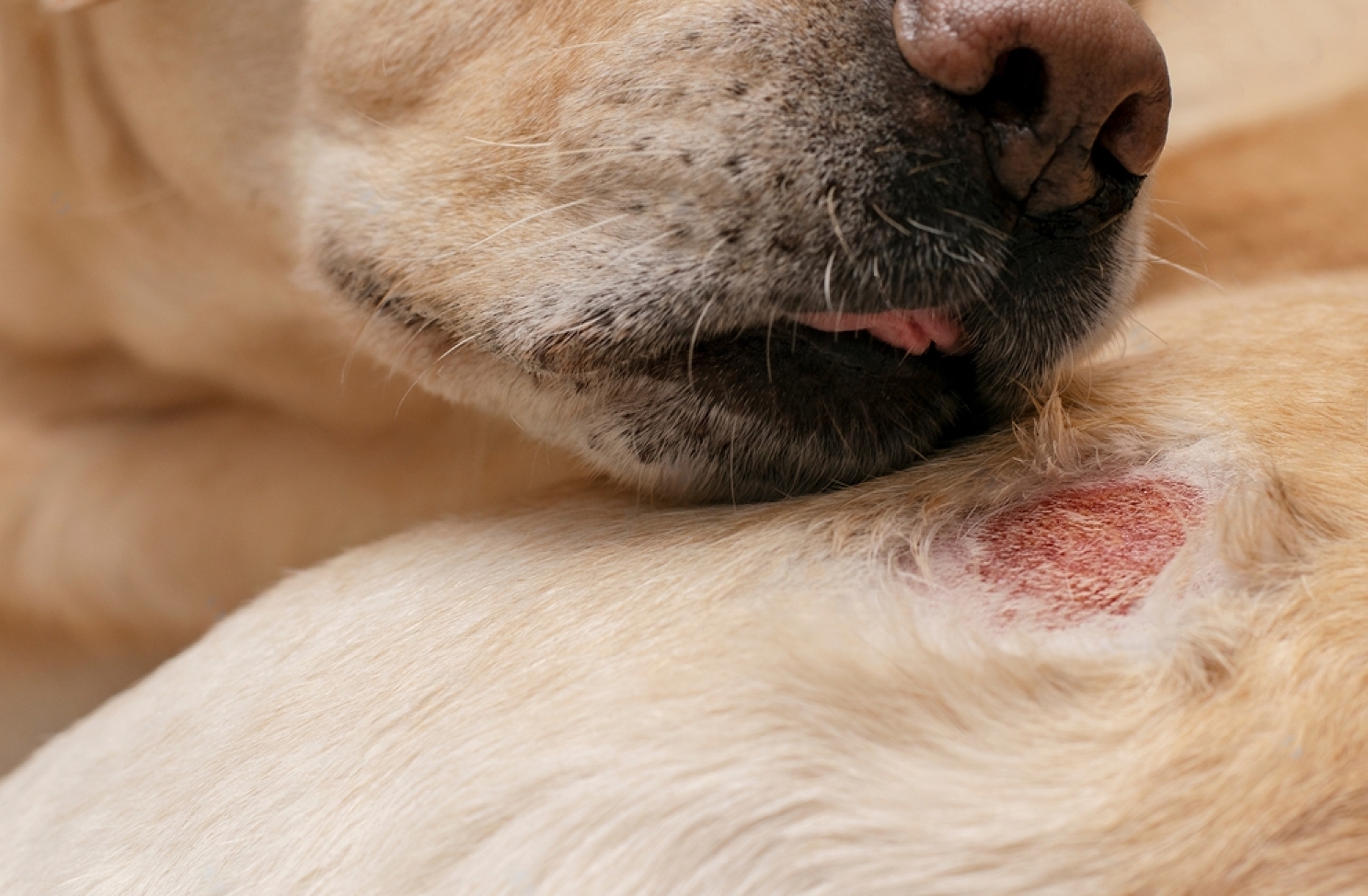
You can use them to cover wounds, or to temporarily bind your dog’s muzzle (so the dog doesn’t lick the wound or bite the owner from shock), or to make emergency leashes. Bandages that stick only to themselves (“cohesive bandages”) are especially good. They do not stick to the coat and can therefore be applied painlessly and can be removed painlessly. Place absorbent cotton between the bandage and the bandage. This will cushion the bandage well. This is especially important for ointments and paw bandages that must be worn for long periods of time. When putting the bandage on the paw, you should also place a narrow strip of cushioning absorbent cotton in the space between each toe – otherwise chafing will occur when the bandage is worn for long periods of time.
You should also keep tweezers handy to remove small foreign bodies such as barbs or splinters from wounds.
You can also remove the tick, but it is important not to crush the body of the tick. If you want to make it easier, you can use a special tick remover. Pulling a tick out is child’s play. Don’t worry.
Next, you will need two pairs of scissors: one for removing the hair around the wounds (this reduces the risk of infection and gives good visibility), the other for cutting the bandages. The scissors should be blunt at the front, so as not to damage the dog’s skin during the work.
Another component is disposable cold packs, which can be used in case of edema and heatstroke, can also be used in case of swelling. You should always have a thermometer and a flashlight handy. You can use the flashlight to check your dog’s nose, muzzle and ears and to take care of his wounds in the dark.
First aid for the dog at home and on the road
As a rule, it is reasonable to have two boxes of bandages: a fully equipped one for home and a limited version for a trip out of town. Here, a few fixing bandages and dressing cloths are enough.
These two things can be used to cover and bandage wounds, treat a bite site, perform artificial respiration through a bandage cloth in an emergency, or create a makeshift leash. It is important that all materials be stored well in both cases.
It is important that the first aid kits be kept in a dry place and not exposed to excessive temperature fluctuations. This can shorten the life of the products. In addition, you should regularly check the condition of the contents and expiration dates so that you have everything on hand in an emergency.
One last thing to keep in mind: if you have any doubts, always see your veterinarian as soon as possible. Wounds often look unsightly, but because of deeper damage or a higher risk of infection, they are more dangerous than the untrained owner might think at first glance.

